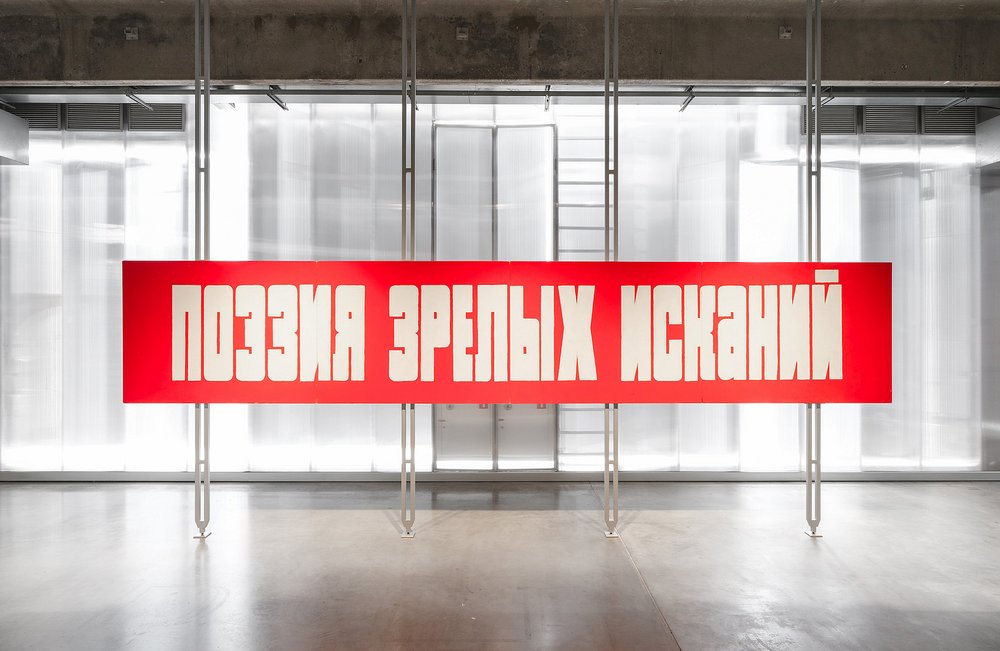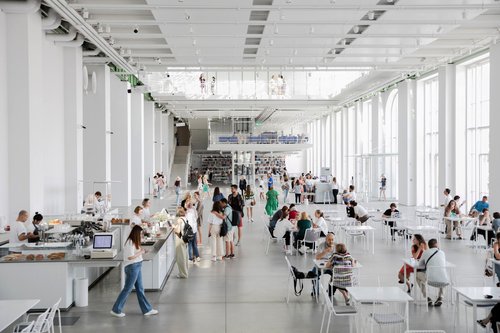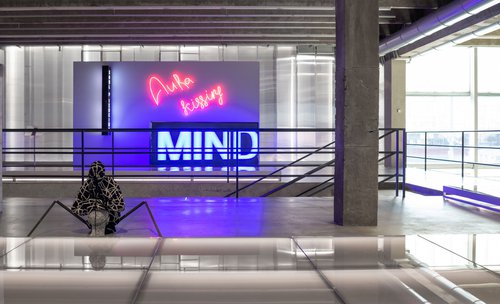Hiding in the Archives

Open Storage. A Prologue. Moscow, 2024. Installation view. Courtesy of Garage Museum of Contemporary Art
Private contemporary art institutions in Russia are putting their archives on display. Is this desire to look back an urge for reflection and nostalgia for better times or a sign of caution?
In today’s Russia, where censorship is omnipresent and many artists have left the country, planning a new art exhibition is a challenge, even for large scale private art institutions. In the face of this some close down like the self-organised Typografia art centre in Krasnodar, which shut its doors after it was declared a foreign agent by the authorities. Or they put on show harmless, mostly abstract art (like Moscow’s GES-2), or go into a state of hibernation, or put up historical art shows sourced from their archives and storage vaults. The latter is becoming increasingly common, yet the strategy of seeking refuge in the past does not always protect institutions from the turbulent world outside.
Currently the Winzavod, a cluster of exhibition spaces, galleries, artist studios, offices and rental spaces in a former winery, is celebrating its 15th anniversary with a historical exhibition ‘NII Archive. Remontage’ which will run until mid-January 2025. The name sounds almost as cryptic in Russian as in English. NII is an acronym for a scientific research institute (or, alternatively, Science, Research, Art), while remontage is a little-known term from the wine-making industry referring to the process of pumping wort from the bottom of the fermenting liquid to bring it to the top. The exhibition, curated by the former head of the State Tretyakov Gallery’s now disbanded New Trends Department Irina Gorlova, features video screens with chronicles of Winzavod’s numerous projects over the years and glass cases with photo documentation, and an interesting, if somewhat random, collection of art. Most of the Winzavod Foundation collection comes from two programs for young artists. The first is the now-defunct Start, which via an open call used to offer young creatives the opportunity of a solo exhibition in a small basement room. The other is a program called Open Studios, in which a cohort of young artists are invited to work and showcase their art to the public in a spacious shared space, formerly a gallery. It is open to the public during the art centre’s working hours, and the program provides artists the opportunity to network with curators, critics, art dealers and fellow artists. Controversially, most artists use their part of the studio as a showroom rather than an actual workspace making it difficult to immerse yourself in the creative process with strangers constantly wandering around and looking over your shoulder as one of the participants told Art Focus Now. Most of the participants from the program have left a piece of their work behind and these artworks were ultimately donated or acquired by the Winzavod Foundation, according to its founder Sofia Trotsenko.
The exhibition includes impressive early works by artists who took part in the Start program at the beginning of their careers and have since earned international recognition. Among them are Tanya Akhmetgalieva (b. 1983), Evgeny Antufiev (b. 1986) and Ulyana Podkorytova (b. 1984). Trotsenko explained that the NII Archive show is only a beginning of what is to become an annual exhibition dedicated to the history of Russian art over the past 30 years. “If we do not start now, when will it happen?” Trotsenko said. “Many people who can remember or tell or show us something are already passing away”.
Garage Museum has also decided to showcase some of the gems in its archive, which is the first big show after a two-year hiatus. The institution suspended its exhibition program in February 2022, after Russian troops entered Ukraine. A statement published on its website on 26th of February announced: “The team at the Garage Museum of Contemporary Art has decided to stop work on all exhibitions until the human and political tragedy that is unfolding in Ukraine has ceased. We cannot support the illusion of normality when such events are taking place. Garage has always been an international institution open to a plurality of voices. We are categorically opposed to any and all actions that create division and isolation. We see ourselves as part of a wider world undivided by war.” The statement which was removed from the website in February of 2023. The museum, which once hosted ambitious international art projects such as solo shows of Louise Bourgeois (1911-2010) and Takeshi Murakami (b. 1962), has converted its exhibition spaces into a free public library. Its educational programming has continued as before and some works of art have been sporadically displayed by the entrance of the museum.
In a new development, in August of this year, part of the library space was given over to a display called ‘Open Storage. A Prologue’. The museum does not refer to it as an exhibition on the website rather the “first stage in the showing of its collection of contemporary art”, comprising Russian art from the 1980s to the 2020s. Founded in 2008 as a Centre for Contemporary Art and re-branded as a Museum in 2014, the Garage did not initially have a permanent collection. It announced plans to build one only in June of this year yet, as Open Storage’s co-curator Sasha Obukhova told Art Focus Now, the museum had already begun work on it two years ago. “We had to rebuild and relaunch ourselves in the knowledge that we could not continue the same exhibition activity as before and in the end we understood that we have enough expertise in the history of our national contemporary art to launch our own art collection, based on our archive.”
The new display is the first step in this process. Since 2012, Garage has been collecting archival materials on Russian contemporary art, accepting donations and buying personal archives from private sources. It turned out that some of the items “were both a historical document and a work of art”, and according to the website these pieces have been included in ‘Open Storage’. Despite its name, the display does not look like a normal museum open storage as those are usually cramped and unlabelled. The exhibition is divided into several separate sections dedicated to an artist or art group, the exhibits labelled and with detailed explanations. The pieces on display range from old black and white photos of performances by Andrei Monastyrski (b. 1949) to a fully functioning VR game by Mikhail Maksimov (b. 1974), complete with a member of staff, who assists visitors with goggles and controllers. The display offers a new look at art history bringing into the limelight new names, such as Misha Le Zhen’ (b. 1958), a performance artist from Saratov. The new display has quickly found itself on the radar of ´patriotic´ Russian enthusiasts. In September two visitors came to the show and started questioning the staff about the museum’s attitude to the Special Military Operation (SVO), an official name for Russia’s actions in Ukraine. They filmed their conversation with two staffers and the video surfaced on one of the Russian propaganda Telegram channels with a comment: “Garage is holding exhibitions again although its management previously said it was stopping operations while the SVO was underway and left Russia. Why did they reopen? The answer is obvious: they need money”.
In March last year Inloco Initiatives, the team behind the St Petersburg’s Street Art Research Institute launched a new institution called Street Art Storage housed in a compact yet well organised open storage venue located in the city’s trendy cultural hub Sevkabel Port. You can visit it on a guided tour and during temporary exhibitions it is open to the public. Its latest exhibition Artefacts, which runs until mid-January 2025, offers a glimpse into the working processes of street artists with stencils, brushes, spray cans and paint splattered hoodies displayed alongside fragments of the works of art which have been salvaged from street walls. The small display has an uncanny, archaeological air as if showing remnants from a lost civilization, a sunken Atlantis. This touches a nerve as many street artists who used to create poignant, politically and socially charged works have left Russia during the last two years, while others, who are still in the country, have stopped working in the streets. The archive enthusiasts are preserving memories of their heyday for the future as it seems today there is little else anyone can do.
NII Archive. Remontage
Moscow, Russia
16 November, 2024 – 19 January, 2025
Open Storage. A Prologue
Garage Museum for Contemporary Art
Moscow, Russia
30 August 2024 – Ongoing
Artefacts
St Petersburg, Russia
16 November, 2024 – 15 January, 2025















